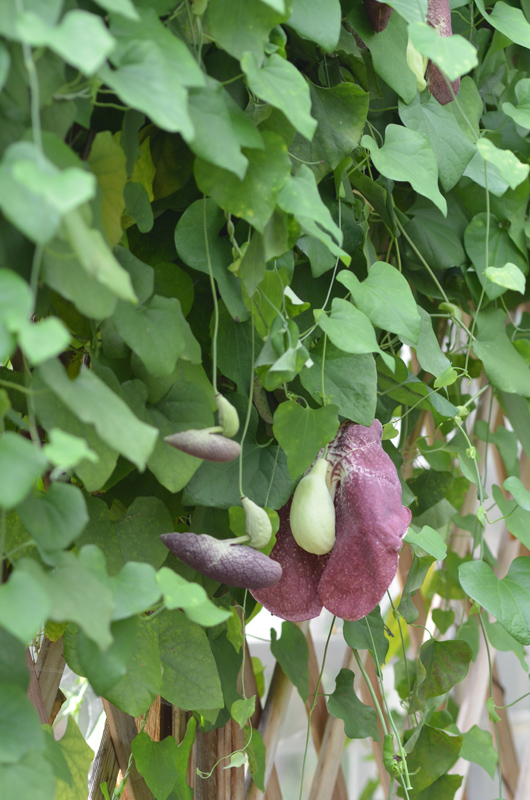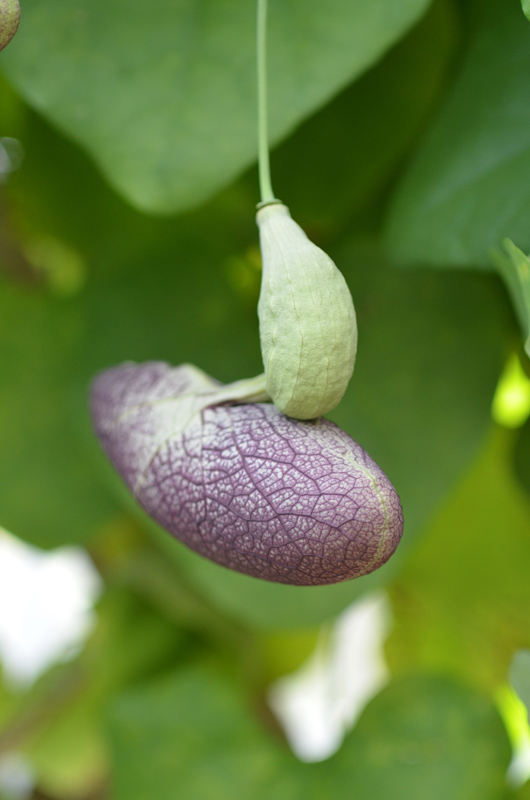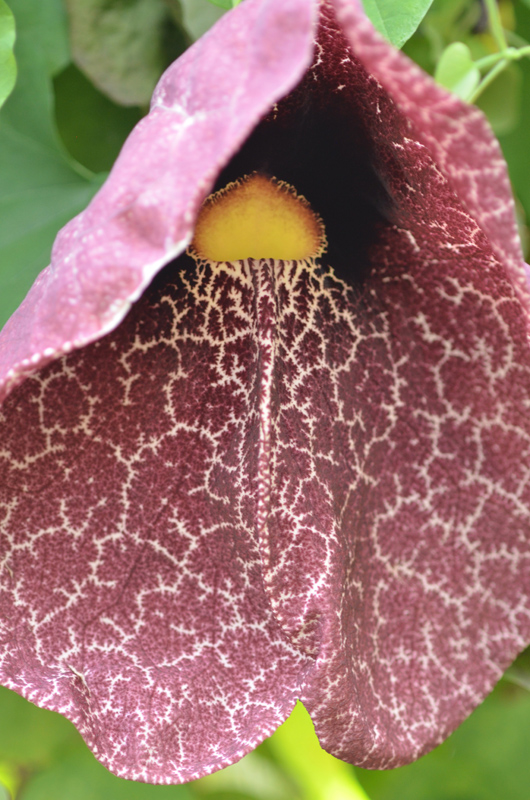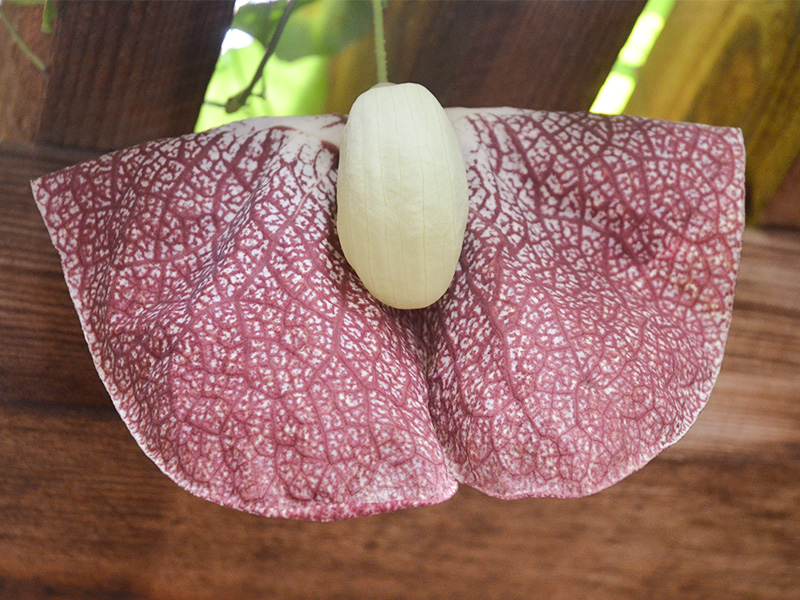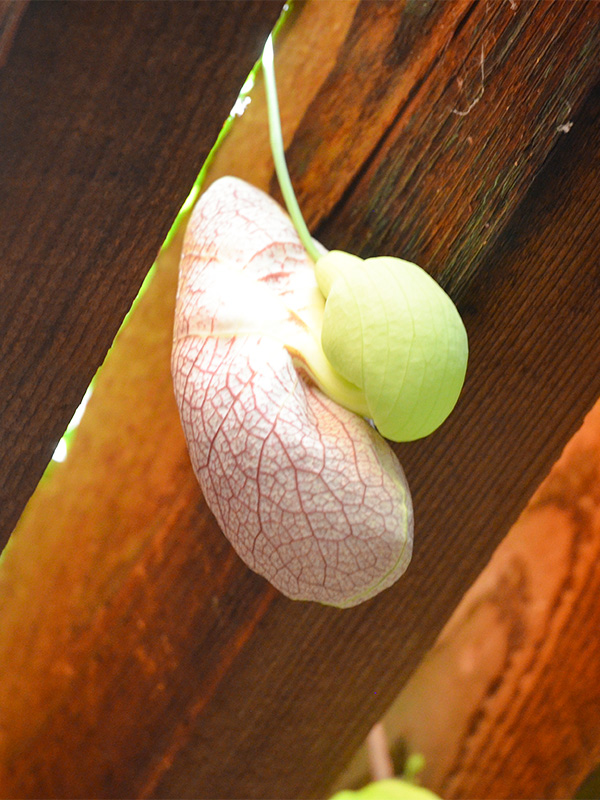| General Description | The plant is poisonous to humans and livestock. It is the food source of the tropical swallowtail butterfly. |
| Landscape | Ornamental. |
| Propagation | Sow seeds indoors before last frost. |
| Cultivation | Grow in full sun or partial shade in a rich, well-drained soil, watering sparingly in the winter and plentifully during the growing season. |
| Pests | Prone to attack from aphids and red spider mites. |
| Notable Specimens | The University of Alberta Botanic Garden, Devon, Alberta, Canada. |
| Habitat | Lowlands, tropical forests, thickets and near streams/gullies. |
| Leaf Description | Leaves are deeply triangular cordate (heart-shapped), 10 - 20 cm in length and 8 -15 cm wide. |
| Flower Description | Enormous, solitary and trumpet-shaped flowers that smell of rotting meat as female. Attracts flies. The insects enter the flower and are forced down by the hairs lining the bloom. After bloom opens the flower enters the male stage. The flowers close at dusk. |
| Fruit Description | Fruit is cylindrical, 10 - 4 cm, with flat triangular seeds. |
| Colour Description | The flowers are blotched with yellow, purple, white, red and green. The leaves are a deep green. |
| Texture Description | The leaves become smooth as it ages. |
